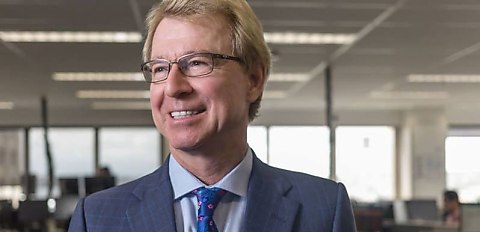Speaking at AMP Bank’s Market Insights hybrid event and webinar on Tuesday (14 March), the group’s chief economist Shane Oliver outlined to delegates that he believed property prices would continue a downward trajectory towards the end of the year.
Noting that we were currently in the mid of a ‘correction’ following rampant price growth over the past two years, he suggested that, historically, whenever rates go up, house prices “have a bit of a dip”.
Mr Oliver said he was therefore “a little bit surprised” by the easing off in price falls recently but reiterated his belief that there was “still some more downside in property prices”.
Speaking to delegates, the AMP chief economist reflected that while the latest CoreLogic data showed that the pace of decline had flattened in February and was marginally up in March so far, he said that this could be a “false dawn”, particularly for Sydney and Melbourne markets.
The chief economist said he believed the stablisation in prices and higher clearance rates in Sydney and Melbourne were likely a short “rally” as a result of “bargain hunting in a time of a lack of supply”.
“Listings are pretty low and current home owners don’t have a big incentive to sell at this point,” he said, suggesting this could be feeding into a false sense of calm.
“The risks are still on the downside (although I would have to admit that it's messy).”
The AMP chief economist said that while some factors would help support house prices — such as low listings, immigration and population growth, and low rental property vacancy levels — there were more factors that would likely pull prices down further.
“The negatives are we’ve still got poor housing affordability, household debt is as high as ever, if not higher than ever, and we still have rising mortgage rates and the fixed rate reset which is where about 900,000 loans will reset from 2 per cent rates to 5–6 per cent ... debt servicing costs are now pushing up towards previous highs so that’s probably the biggest single risk there,” he continued.
“As high-interest rates continue to feed through to the property market, as fixed rates reset to higher levels, and as the economy slows to a risk of recession (although my base case is that will be avoided but obviously the economy will still slow down), unemployment will get up. So, we’ve still got some more downside in property prices and what we’re seeing at the moment is just a blip.”
He added that he expected to see property prices start to recover again towards the end of this year and into 2024, “as the positives of returning immigrants and a tighter, underlying property market start to impact then property prices … particularly as the Reserve Bank cuts rates”.
However, AMP’s chief economist said the growth in prices would likely come from the smaller capitals as Sydney and Melbourne become “underperformers”.
“We are in a new environment where other cities will probably outperform Sydney and Melbourne ... I think we’re in a period where Brisbane, Adelaide, Hobart continue to do a little bit better than Sydney and Melbourne. And in the meantime, I would probably be betting that Perth and Darwin will outperform the rest,” Mr Oliver said.
[Related: Have we hit the bottom of the market? Economists deliberate]
